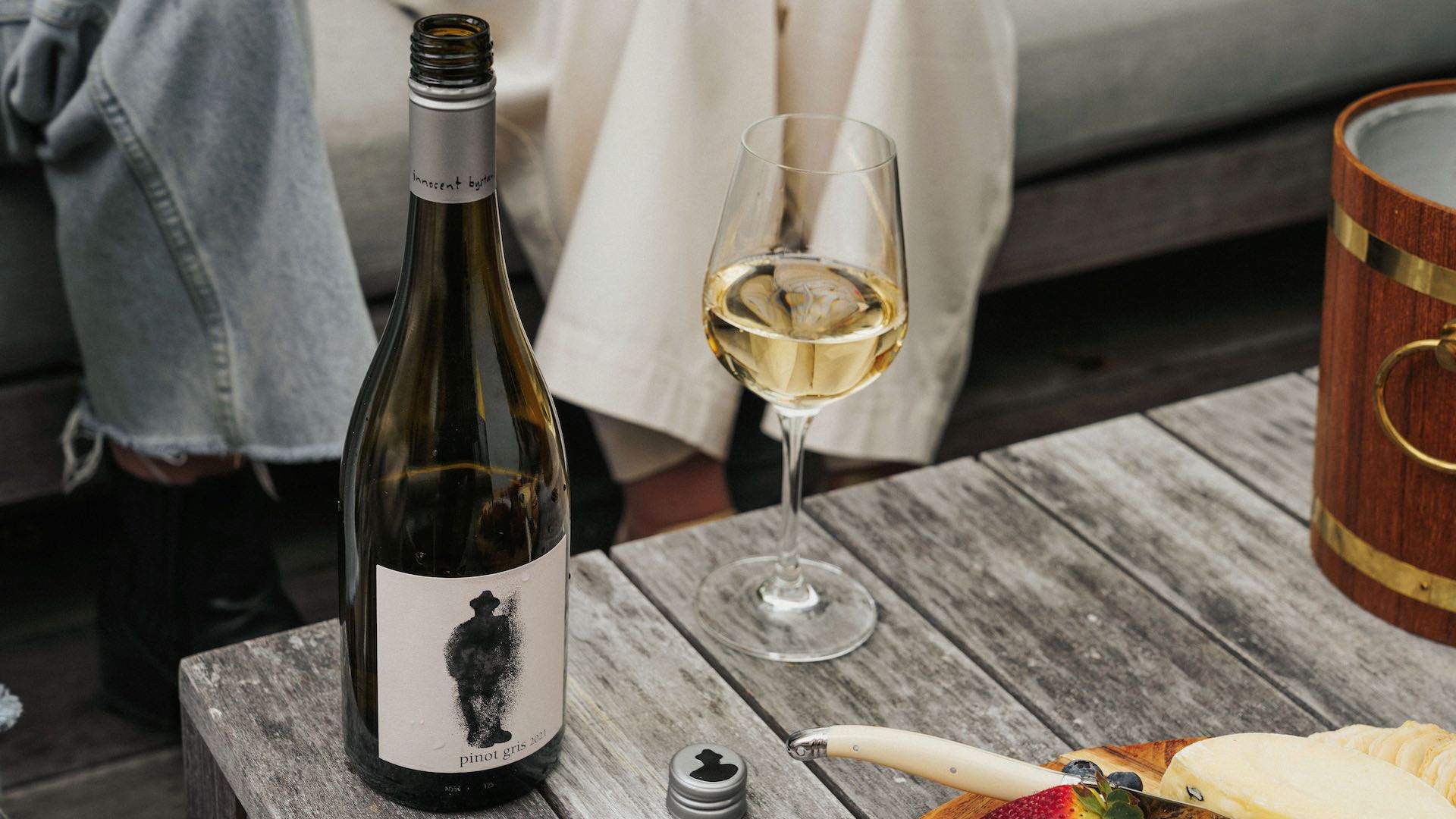
A No-Bullsh•t Guide to Wine Words
Seasoned wine professionals and lovers of the drink have developed a kind of shorthand when talking about wine.
This unique language is a way of describing certain elements and characteristics within the glass that might explain how a wine feels in the mouth or signposts a particular winemaking technique.
In collaboration with Innocent Bystander, we’ve pulled together a guide to decoding wine jargon so you can know your ABCs of wine words (that’s acidity, biodynamics and carbonic maceration for the wine nerds out there). Don’t let fancy wine slang trip you up again.
Cheat Sheet
Four ways to describe wine (that’ll make it sound like you know what you’re talking about)
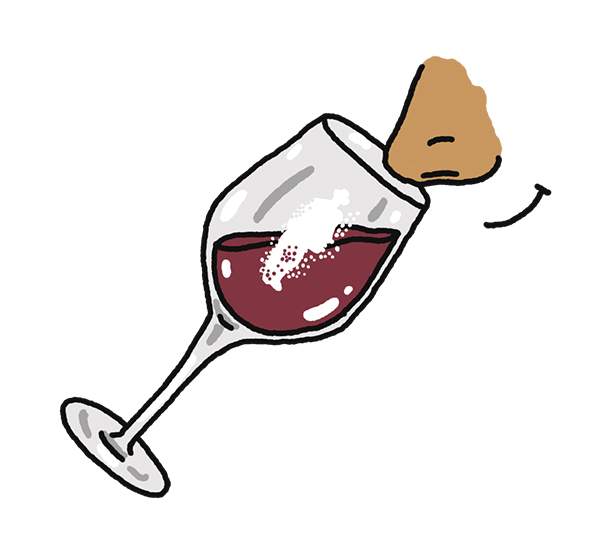
It’s universally recognised in the scientific community (and anecdotally for those who spend our lives working in wine) that your olfactory senses make up most of what you taste and experience with the wine in the glass.
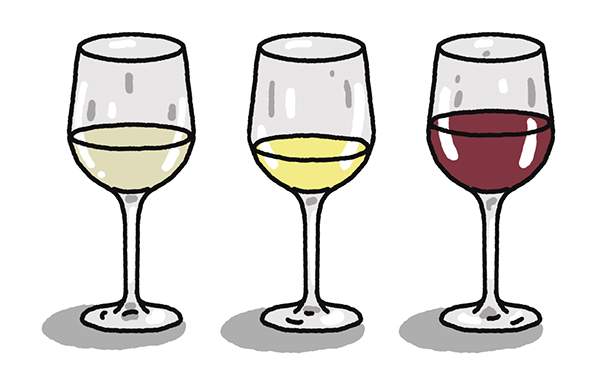
There’s an adage that we ‘drink with our eyes first’ and looking at a wine’s colour is the precursor to knowing if there’s anything wrong with the wine you’re about to imbibe.
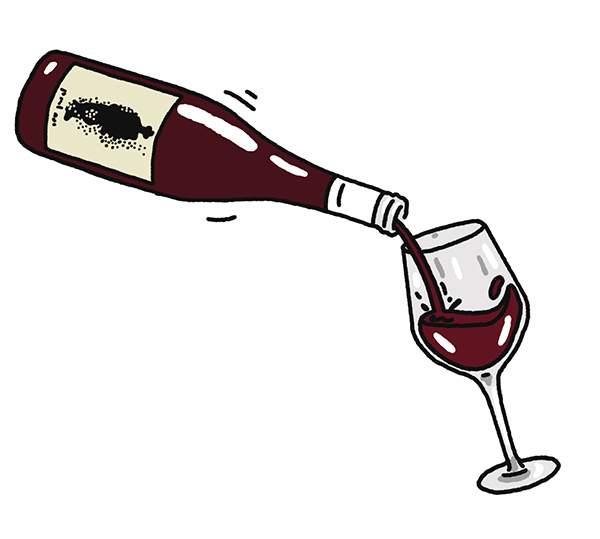
Also known as the best part. The tasting experience isn’t just defined by flavours in the glass, but also how the wine ‘feels’ in the mouth.

Do you know your acidity from your tannins? And the meaning of ‘Whole Bunch’? No? Well, you’re about to!
THE SMELL
It is said that there are hundreds of aroma compounds (or fragrances or flavourings) found in wine. The grape itself has sugars and acids which are precursors of flavour — and when fermented into wine, these become enhanced into esters and aromatics.
So when you read on the back label on a bottle that reads “this wine tastes like fresh strawberry, juicy plums and violets”, it’s not because the winemaker has crushed fresh strawberries into the blend — it’s a natural flavour (or ester) that occurs in the grape itself. Naturally occurring esters are used extensively in the flavour industry for everything from essential oils to candy.
You then have outside influences of different types of oak — via the wooden barrels that wine is aged in — and the flavours they impart (usually a vanilla or buttery character commonly seen in chardonnay or cabernet, for instance). External factors such as UV sunburn on the grapes when they’re growing create a sheep’s wool or lanolin character in the wine, and grapes have been known to absorb the oils from eucalyptus trees which presents as a minty or menthol flavour in some red wines.
Basically, there are a bunch of different influences that can impact what a wine smells like.
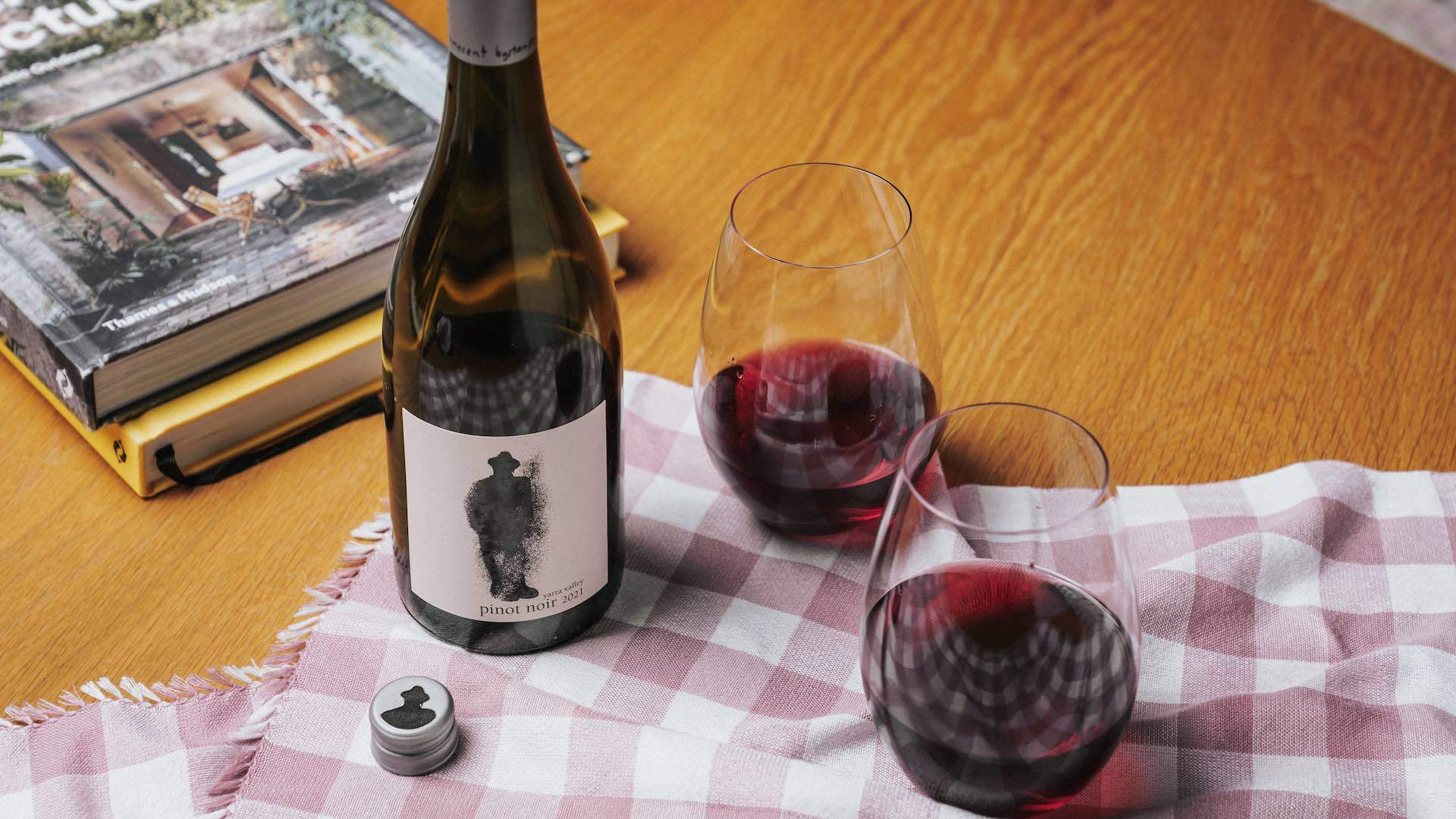
THE COLOUR
There’s a lot that the colour of a wine can tell us — but usually it has nothing to do with the flavour within the glass. Colour is our first indication of the age of a wine. Older wines will start to develop brown or brick-red colours (FYI, if your glass is entirely brown, you might have accidentally poured yourself rum or bourbon, so pour it out and try again).
White wines that have been fermented in oak will tend to look more yellow or golden in the glass than wines without oak. And skin-contact wines will generally have darker and deeper colours as that’s where the grape’s colour comes from — the skins. Most grape juice is clear until it comes into contact with the grape skins during the process of fermentation which turns the fruit into wine. The longer the liquid comes into contact with the skins, the darker the colour will be. Makes sense. Take, for example, an Innocent Bystander Pinot Noir Rosé, which takes roughly three hours of skin contact to develop its gentle blush.
Fun fact: when you swirl the wine, you will see tears (or ‘legs’) develop on the sides of the glass. This a phenomenon called the Gibbs-Marangoni Effect and it indicates the presence of alcohol in the wine. Thicker ‘tears’ equals a higher alcohol level.
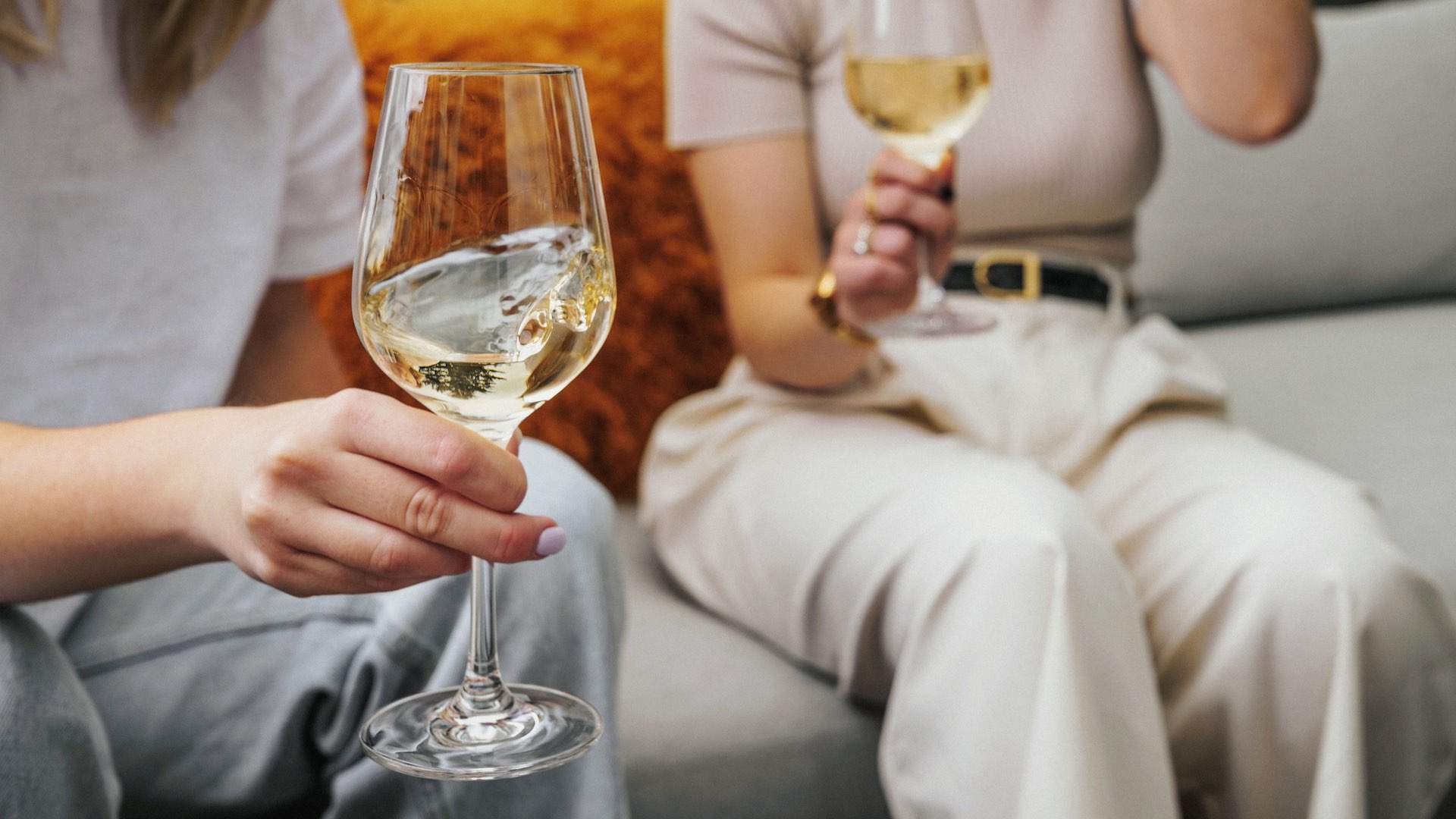
THE TASTE
When you taste a wine, you’ll focus on three major components, even if you don’t realise you’re doing it. They are known as primary, secondary and tertiary.
Primary flavours are your fruits, flowers, and earthy elements, which come from the DNA makeup of the grape made into wine. If you’ve ever heard someone say something along the lines of “this riesling tastes like lemon pith, lime peel and jasmine flowers” then they’re referring to the primary flavours.
Secondary flavours are all about what’s been done to the wine. For example, was it fermented in oak? Then it might have vanilla notes. Tertiary flavours are your aged characters and are not seen in young wines (that is, wines that are less than five years old) — think tobacco, clove, and leather notes.
To make the most of each mouthful and draw out the full spectrum in a glass of wine, make sure you swish it around in your mouth to get the full effect before swallowing. You can do this by taking a small sip of wine, softly pursing your lips, and drawing air into the mouth; this aerates the wine and ‘opens’ it up. Emphasis on small; you do not want to try this with a big glug of wine in your mouth, because this is a recipe for coughing up your wine onto your wine-tasting companions.
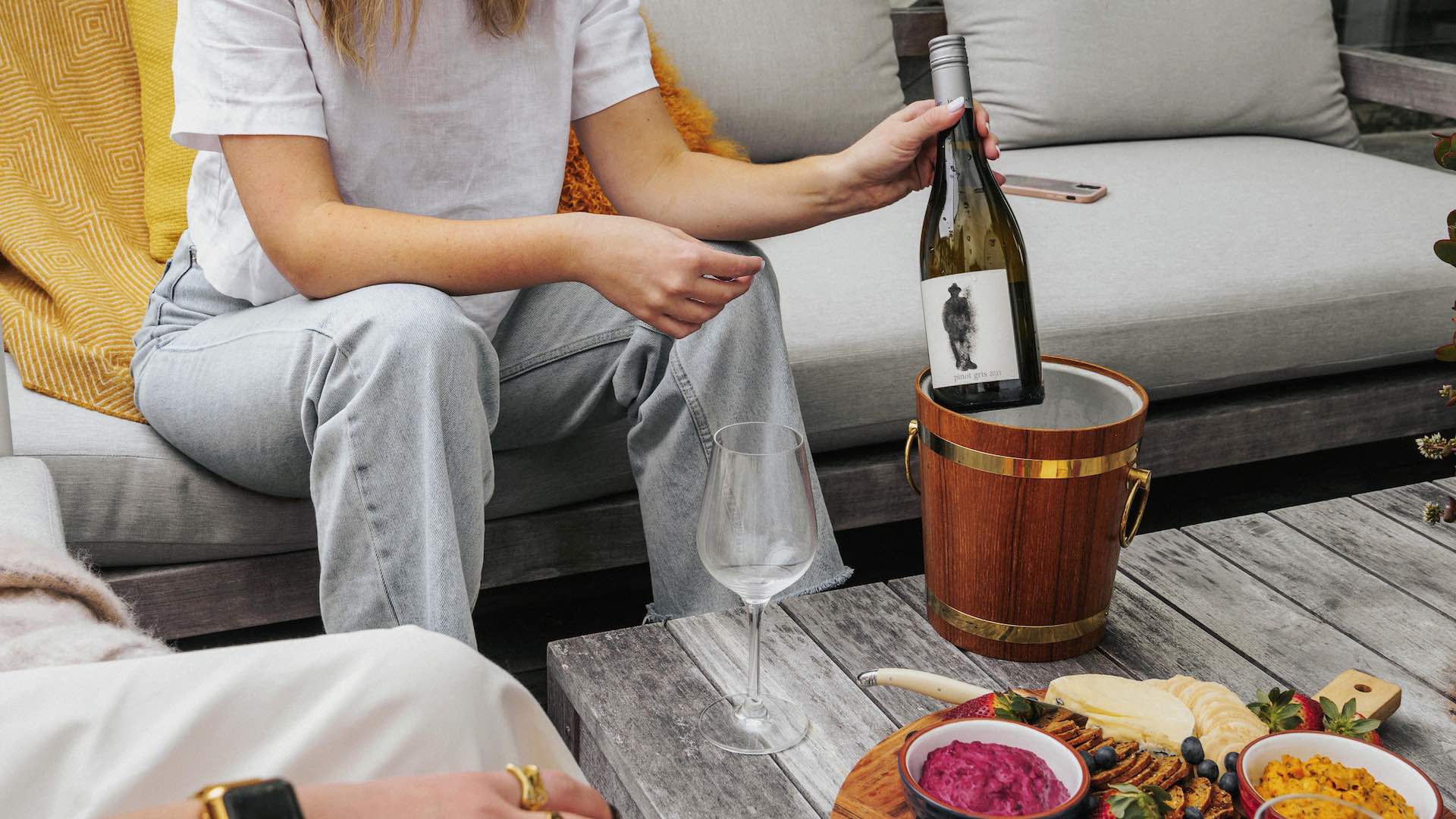
THE LINGO
Here are some key wine words to get you started — think of this as a mini bluffer’s guide.
Acidity: Acidity is the level of sour/tart characters in wine; it’s the effect that makes your mouth water. Low-acid wines generally taste round or flabby, while high-acid wines are lighter in body and taste very tart. Think about how lemons and granny smith apples can be sour, but you experience that sourness differently.
Biodynamics: The concept behind biodynamics is that everything in the universe is interconnected and gives off a resonance or ‘vibe’. Biodynamic winemaking and grape-growing is the practice of balancing this resonance between vines, humans, earth and stars. Essentially, biodynamics is a holistic view of agriculture — picking, fermenting and planting all based on the moon’s cycles and, in turn, the ‘days’ it creates; root, fruit, flower.
Carbonic maceration: This is done before crushing the grapes (a common practice in pinot noir, rosé and some red production). During carbonic maceration, a chemical reaction is created using whole grape clusters and carbon dioxide, usually in the form of dry ice. The carbon dioxide gas permeates through the grape skins and begins to stimulate fermentation within each individual grape. This creates wines that tend to be lively in colour, thanks to intense fermentation with the skins, and wines that are bright and juicy. A bottle born from this practice is the Innocent Bystander Gamay Pinot Noir, which is equal parts fresh and complex.
Tannins: Tannin is an antioxidant found in the skin of a grape. Tannins can taste bitter and create a drying sensation on your tongue. High-tannin wines will grip the insides of your mouth, like the sensation of chewing. When describing tannins, talk about them like sandpaper: fine, medium, gritty or grippy.
Whole bunch: The use of whole bunch during fermentation means that the grapes haven’t been separated from their stalks or stems before being put into the crusher or fermenter. This is generally done with reds but can also be done with whites if winemakers want to build more texture in the wine. In reds, particularly pinot noir, it gives the wine an added layer of flavour, generally a savoury/stalky element. Take Innocent Bystander’s sophisticated 2020 syrah, for example, in which 20 percent of the contents of each bottle is whole-bunch pressed, resulting in a silky and subtly perfumed drop.
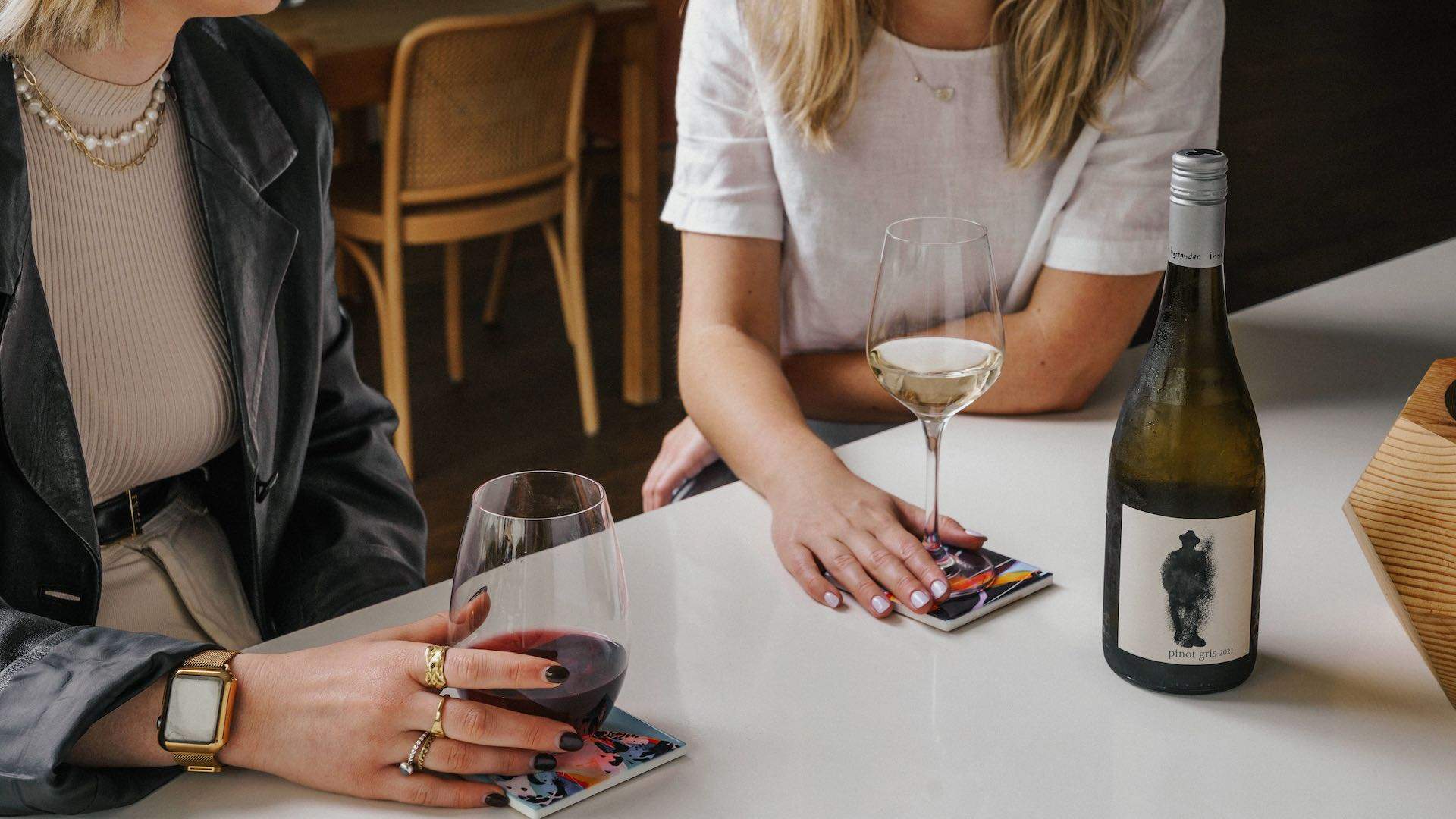
Looking for your next great wine? Head to the Innocent Bystander website.
Illustrations: Barry Patenaude.
Images: Declan Blackall.